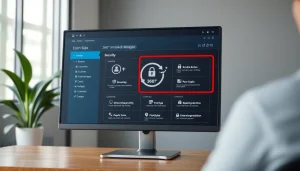Maximize Productivity with Top Virtual Assistants for Your Business
Understanding Virtual Assistants
What Are Virtual Assistants?
A virtual assistant (VA) is a remote worker who provides various administrative, technical, or creative support to businesses and entrepreneurs. They can handle tasks such as managing emails, scheduling appointments, bookkeeping, social media management, content creation, and much more. With the rise of telecommuting and digital nomadism, the role of virtual assistants has become increasingly prevalent, allowing businesses to streamline operations and focus on strategic initiatives.
Essentially, virtual assistants function as an extension of the employer’s team. They allow companies to maximize productivity without the costs associated with hiring full-time staff. Many businesses, from startups to established corporations, leverage virtual assistants to enhance efficiency and reduce operational overhead. With the ability to hire skilled professionals from around the globe, businesses can find the right match for their needs at competitive rates.
Key Benefits of Hiring Virtual Assistants
- Cost Efficiency: Hiring a virtual assistant typically costs less than bringing on a full-time employee. Employers save on overhead costs such as benefits, office space, and taxes.
- Flexibility: Virtual assistants often work on a freelance basis, providing businesses with flexibility in hiring based on workload needs. This allows businesses to scale up or down without the long-term commitment.
- Access to Global Talent: Organizations can source talent from any geographical area, gaining access to a diverse range of skills and experiences that may not be available locally.
- Increased Productivity: By outsourcing routine tasks, business owners and employees can focus on strategic initiatives that drive growth and generate revenue.
- 24/7 Availability: With virtual assistants spanning different time zones, businesses can ensure that tasks are processed around the clock, improving responsiveness and productivity.
Common Misconceptions about Virtual Assistants
Despite their growing prevalence, there are several misconceptions surrounding virtual assistants. One common myth is that VAs only handle mundane tasks. In reality, these professionals can possess specialized skills in areas such as digital marketing, project management, and customer service, making them invaluable assets to any business.
Another misconception is the belief that virtual assistants are not reliable or cumbersome to work with due to distance. However, effective communication tools have made remote collaboration smoother than ever. With regular check-ins and clear protocols, many businesses find that their virtual team members can be just as engaged and productive as in-house staff.
Types of Virtual Assistants
Administrative Virtual Assistants
Administrative virtual assistants are among the most common type of VAs. They handle various office tasks, such as answering emails, managing schedules, booking appointments, and conducting research. These assistants are essential for business owners who want to prioritize their time and responsibilities but still need to keep operations running smoothly.
Specialized Virtual Assistants (e.g., Healthcare)
Some virtual assistants specialize in niche areas such as healthcare, law, real estate, or digital marketing. For instance, healthcare virtual assistants may have training in medical terminology and can handle tasks like patient scheduling, insurance verification, and medical billing. By hiring a specialized VA, businesses can ensure that they have the necessary expertise tailored to their specific industry needs.
AI-Powered Virtual Assistants
Artificial intelligence (AI) is changing the landscape of virtual assistance with the advent of AI-powered virtual assistants like chatbots and voice assistants. These tools can automate routine tasks, handle customer inquiries, and provide real-time information, freeing human virtual assistants to focus on more complex tasks. While AI assistants can handle lower-level tasks efficiently, they lack the nuanced understanding of personal relationships and complex decision-making that human VAs provide.
How to Choose the Right Virtual Assistant
Identifying Your Business Needs
Before hiring a virtual assistant, it’s crucial to assess your business needs. Identify the tasks you need help with, and categorize them into specific roles such as administrative, technical, or specialized support. Consider factors like workload peaks and the type of skills you require. This clarity will help you find someone who suits your requirements perfectly.
Evaluating Skills and Experience
When assessing potential virtual assistants, prioritize their skills and experience in relation to your needs. Review their portfolios, seek testimonials from previous clients, and consider conducting skills assessments to ensure they meet your standards. This evaluation process can reveal not only their capabilities but also their fit within your company culture.
Interview Tips for Potential Virtual Assistants
Conducting effective interviews is integral to selecting the right virtual assistant. Prepare open-ended questions that encourage candidates to explain their experience and approach to various tasks. Consider situational questions that assess their problem-solving skills and adaptability. Additionally, screen for communication skills, as clear and timely responses are vital to remote working relationships.
Best Practices for Working with Virtual Assistants
Effective Communication Strategies
Clear communication is the cornerstone of a successful collaboration with virtual assistants. Utilize tools like email, instant messaging, and video calls to maintain an open line of communication. Regular check-ins can help establish rapport and ensure that tasks are completed according to expectations. Building a mutual understanding of preferred communication styles can enhance efficiency and reduce misunderstandings.
Setting Clear Expectations and Goals
Providing specific guidance is essential for virtual assistants to perform effectively. Develop a comprehensive onboarding process that includes an overview of responsibilities, milestones, deadlines, and performance metrics. Consistent feedback and the establishment of SMART goals (Specific, Measurable, Achievable, Relevant, Time-bound) can help virtual assistants align their efforts with your business objectives.
Tools for Collaborative Work with Virtual Assistants
To foster collaboration, leverage project management and communication tools such as Trello, Asana, Slack, or Zoom. These platforms can facilitate task allocation, deadlines, and real-time updates, ensuring everyone is on the same page. Establishing a shared document repository using services like Google Drive or Dropbox enhances the ease of file sharing and collaboration.
Future of Virtual Assistants in Business
Trends in Virtual Assistant Services
The demand for virtual assistants continues to grow as businesses increasingly recognize the value of outsourcing. Trends suggest a shift toward specialized VAs, with roles becoming more defined and niche-oriented. As more businesses turn to remote operational models, this demand will likely result in a diverse array of virtual assistant services, accommodating varying business needs.
Impact of Technology on Virtual Assistants
Technology continues to revolutionize how virtual assistants operate. Innovations in AI, machine learning, and automation are reshaping the tasks that VAs perform. Tasks that were once time-consuming can now be completed much faster, enhancing efficiency. Furthermore, technology allows virtual assistants to expand their services beyond traditional roles, integrating new tools and platforms as they evolve.
Preparing Your Business for a Virtual Assistant
To successfully integrate a virtual assistant into your business, prepare thorough documentation of processes and tasks that need handling. This groundwork will facilitate a smooth onboarding experience and allow the VA to hit the ground running. Additionally, designing a supportive culture where remote work is embraced can foster a more productive relationship between virtual assistants and in-house teams.














Post Comment